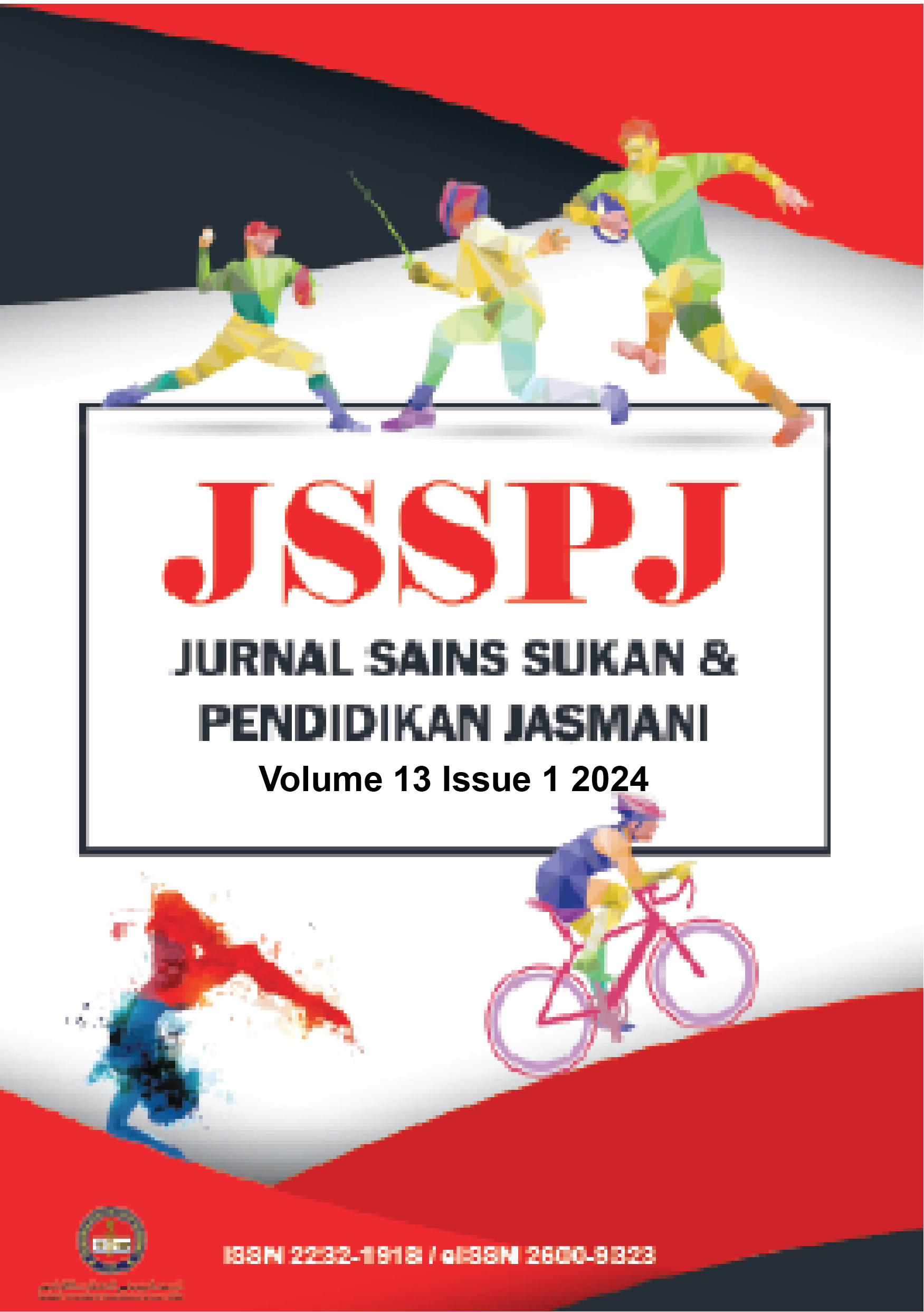The Accessibility for People with Disability at Sports Complex Stadium Tuanku Syed Putra
DOI:
https://doi.org/10.37134/jsspj.vol13.1.2.2024Keywords:
People with disability, Accessibility, Recreational ParkAbstract
This study assesses the accessibility for people with disabilities Sports Complex Stadium Tuanku Syed Putra. In twenty-first century, people with disabilities still facing challenges in reaching public spaces. The absence of adequate sports facilities was a major barrier for participation in physical activity and sports for people with disabilities. This study adopted questionnaires from Norfaezah (2017) measurement scale entitled the Accessibility at Recreational Park Instrument (ARPI) which were issued to 133 people with disabilities around Perlis. Using Statistical Package for Social Science, the hypotheses were statistically analysed using Mann-Whitney Test, at p < 0.05 level of significant. Results show that among the accessibility features offered at Sports Complex Stadium Tuanku Syed Putra with the highest mean value goes to ease to access while the lowest mean value goes to lighting. In addition, the outcome indicates that respondents concur that the most crucial accessibilities feature with highest mean value is access routes while the lowest mean value is signage. The result showed there are gender-specific differences in the significance of lighting, signage, and access routes for people with disabilities. In future, the researcher may conduct a study on the accessibility offered at other recreation parks in Perlis. The governing body may utilize the findings to improve recreation parks in Perlis yet making it accessible to everyone.
Downloads
References
Ahmad Zamil, Z. (2008, December 4). Kemudahan golongan Kurang Upaya: kepentingan pada masa kini. http://tamanmelayu2012.blogspot.com/2012/12/kemudahan-golongan-kurang-upaya.html
Duignan, M. B., Brittain, I., Hansen, M., Fyall, A., Gerard, S., & Page, S. (2023). Leveraging accessible tourism development through mega-events, and the disability-attitude gap. Tourism Management, 99, 104766. https://doi.org/10.1016/j.tourman.2023.104766
Fitri, M., Zainal Abidin, N.E., Novan, N.A., Kumalasari, I., Haris, F., Mulyana, B., Khoo, S., & Yaacob, N. (2022). Accessibility of Inclusive Sport Facilities for Training and Competition in Indonesia and Malaysia. Sustainability, 14(21), 14083. https://doi.org/10.3390/su142114083
Gravetter, F. J., & Forzano, L. B. (2018). Research Methods for the Behavioral Sciences (6th ed.). Cengage Learning.
Hashim, A. E., Samikon, S. A., Ismail, F. Kamarudin, H. Jalil, M. N. M., & Arrif, N. M. (2012). Access and accessibility audit in commercial complex: effectiveness in respect to people with Disabilities (PWDs). Procedia_Social and Behavioral Sciences, 50, 452-461.
Martin Ginis, K. A., van der Ploeg, H. P., Foster, C., Lai, B., McBride, C. B., Ng, K., Pratt, M., Shirazipour, C. H., Smith, B., Vásquez, P. M., & Heath, G. W. (2021). Participation of people living with disabilities in physical activity: a global perspective. The Lancet, 398(10298), 443–455. https://doi.org/10.1016/s0140-6736(21)01164-8
North Caroline State University College of Design. (1997). The Seven Principles of Universal Design (2.0, Vol. 4/1/9). https://www.alberta.ca/assets/documents/tr/tr-universaldesign.pdf
Norfaezah, M.R. (2017). Accessibilities of Public recreational Park for People with Disabilities. (Unpublished master's thesis). Universiti Teknologi Mara.
OKUrightsmatter. (2022, December 15). Disability data - OKU rights matter. https://www.okurightsmatter.com/disability-data
Polko, P., & Kimic, K. (2022). Gender as a factor differentiating the perceptions of safety in urban parks. Ain Shams Engineering Journal, 13(3), 101608. https://doi.org/10.1016/j.asej.2021.09.032
Sakip, S. R. M., Akhir, N.M., & Omar, S.S. (2014). User perception on accessibility of public park in Malaysia. In 2nd International Conference on Innovation and Technology for Sustainable Built Environment.
Smith, R. W. (1996). Inclusive and special recreation: Opportunities for Persons with Disabilities. McGraw-Hill Humanities, Social Sciences & World Languages
Westrop, S. C., Melville, C. A., Muirhead, F., & McGarty, A. M. (2019). Gender differences in physical activity and sedentary behaviour in adults with intellectual disabilities: A systematic review and meta‐analysis. Journal of Applied Research in Intellectual Disabilities, 32(6), 1359–1374. https://doi.org/10.1111/jar.12648
World Health Organization. (2022, December 12). Disability. https://www.who.int/news-room/fact-sheets/detail/disability-and-health
Downloads
Published
How to Cite
Issue
Section
License
Copyright (c) 2024 Nur Iman Yazin Affar , Al-Hafiz Abu Bakar, Masshera Jamaludin, Ellail Ain Mohd Aznan, Siti Hannariah Mansor, Norfaezah Mohd Rosli

This work is licensed under a Creative Commons Attribution-NonCommercial-ShareAlike 4.0 International License.





